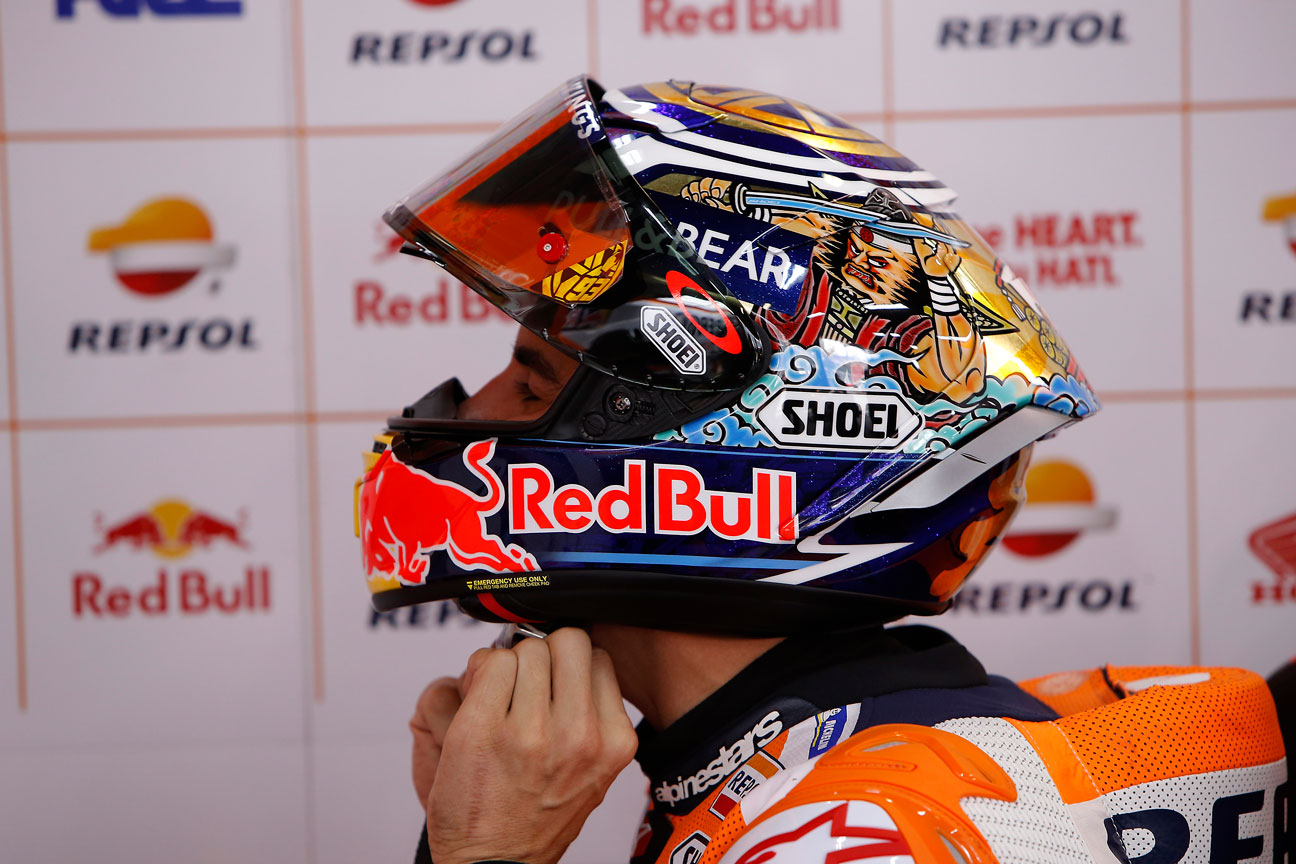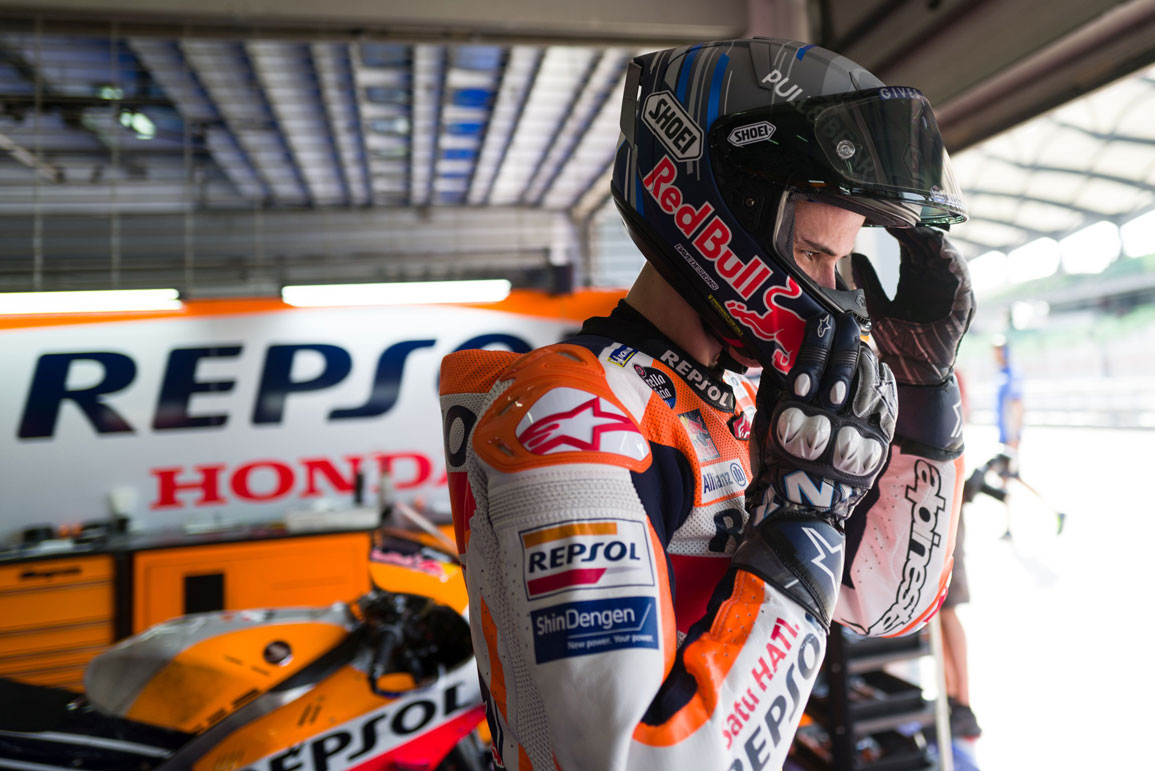The world’s fastest motorcycle helmet is worthless if it doesn’t fit the rider correctly. This is why it’s crucial when choosing the most important protective item for your travels on two wheels, to keep a few things in mind.
Choosing your helmet
There are many variables that can make you opt for one type of helmet or other, beyond more or less eye-catching designs, but the most important must always undoubtedly be safety. To have all of the guarantees, the helmet must be properly homologated.
The first variable is the type of helmet, which include full face, folding or modular, open face, and off-road helmets – although some brands offer some other kind of variation. The recommendation is to always choose one of the two first options. Although an open face helmet may be more comfortable in the summer, the lack of protection (especially in the chin area) doesn’t make up for the increased comfort that you will only notice on hotter days.


No matter what you choose, you must make sure the size is correct. The best method is to try on a helmet in a store since, as is the case with clothing or shoes, each manufacturer tends to have slight variations in sizes or shapes in comparison to the real size. It’s also true that some websites offer a size changing service or free returns, although it’s always better to try on the model you want in a store before making any decisions.
How do you know a helmet fits you well? It’s simple, when the helmet is on and well fastened, it must not move on your head or be too exaggeratedly tight anywhere. You should try to move the helmet in every way and it should not move when you do. In case of impact, a loose helmet can slide around of fall off. Keep in mind that the helmet will slightly adapt to your head over time with use, so if you’re hesitating between two sizes, it’s better to go with the smaller one.
Weight and material
Depending the use you make of your bike, the weight of the helmet may be something you need to keep in mind. If you only travel for a few minutes, or you don’t reach high speeds, it’s less important, but if you’re planning to spend hours on the bike, or travel on highways, it’s important to select the lightest helmet possible to avoid burdening your neck.
The material that makes up the shell (the helmet’s exterior) tends to influence its weight. You can find helmets made with polycarbonate, resins, or fibres. All homologated models have been subjected to the same tests, but ideally, you should select a fibre helmet, whether it’s glass, carbon, or multifibre. This will make the helmet very safe and lightweight.


Vents and visors
It’s crucial for the helmet to have proper ventilation both in the visor and in the upper part. Helmets from leading brands, like Shoei, are tested for hours to make the air intake as efficient as possible, ventilating inside of the helmet and the visor.
Each brand has its own visors and the majority of them have pinlock insert capabilities, whether it’s in their normal or max vision versions, to avoid fogging up the visor in low temperatures. Another interesting fact is that they have scratch resistant coating.
You can also find visors with different coloured options, but these are only recommended for daily use. In this case, when selecting a visor with these characteristics, it’s useful to have a helmet with a quick change system for visors, some only require the touch of a finger!
Additionally, you can find models that have an interior solar panel that can fold out easily.


Closure, interiors, and accessories
The helmet’s closure is a very important safety feature. It is recommended to always search for a double D ring system, or at least, a micro metric style buckle. This will always ensure a perfect fit.
Another recommendation is for the liner to be removable and washable, as well as made with hypo-allergenic materials. Removable nose and chin guards aren’t bad either.
There are models that allow intercoms or have an area for glasses to be inserted without affecting comfort.


Aerodynamics
Maybe you won’t notice it in the city, but if you’re out on the open road or on the circuit, an aerodynamic care will provide you with some advantages.
The first is reducing noise. Helmets have a series of critical points when they’re being made. The shell, visor, and vents are areas that need to be studied in a complex way to reduce noises.
The second is ventilation. The air intakes must be correctly placed, as well as all of the interior conductors and vents. There is no point in having a ventilation system if air can’t circulate in it correctly.
The last, and not least, is the helmet’s effect when moving at a great speed. In MotoGP, you can see that the helmets tend to have added aerodynamics that are perfectly adapted to the shape of the bike’s windscreen and the rider’s race suit to finish the line on the bike’s tail. It may seem false, but a helmet can generate a lot of resistance while riding or undesired movement, and your neck is taking on all of this pressure. Your cervical spine will thank you for getting an aerodynamic helmet.


Your choice
The amount of helmets available on the market can without a doubt be overwhelming. So the best thing is for you to search for the make and model that best fits you and then pick among the available design options.
Whether it’s single-coloured or a replica of Marc Márquez’s helmet, your head will always be well protected.


 Join Us
Join Us  Join Us
Join Us 